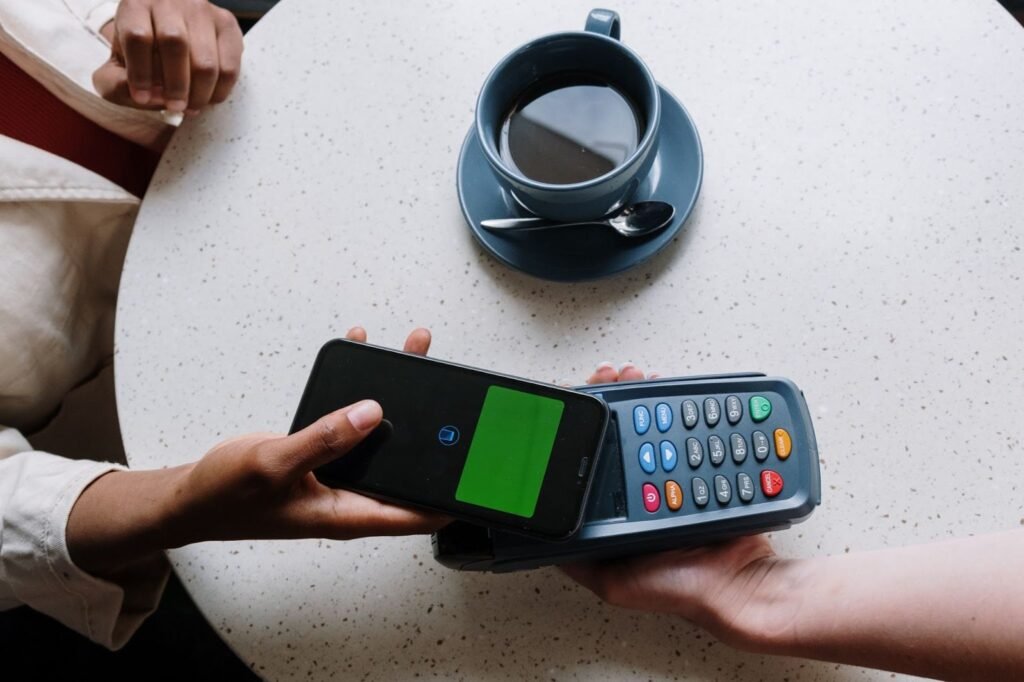
Hello Africa,
As Africa embraces the digital revolution, technologies like Bitcoin and the Lightning Network are gaining popularity. Bitcoin, the world’s first decentralized cryptocurrency, has the potential to revolutionize the financial landscape. Within the Bitcoin ecosystem, the Lightning Network stands out as a powerful scaling solution that offers fast, low-cost transactions. In this beginner’s guide, we will explore the fundamentals of the Bitcoin Lightning Network, its benefits, and how it can empower Africans in the realm of digital finance.
Africa is a continent with a population of over 1.2 billion people. However, only about 20% of Africans have access to traditional banking services. This lack of access to financial services has a number of negative consequences, including poverty, unemployment, and economic inequality. This means an opportunity to leapfrog the world like we did with mobile phones.
Bitcoin and the Lightning Network have the potential to address these challenges by providing Africans with access to affordable and efficient financial services. The Lightning Network is a layer-two scaling solution that allows for fast, low-cost payments off-chain. This makes it ideal for micropayments and everyday transactions, such as buying goods and services, sending remittances, and paying for utilities.
What is the Bitcoin Lightning Network?
The Bitcoin Lightning Network is a layer-two scaling solution built on top of the Bitcoin blockchain. It aims to address Bitcoin’s scalability limitations by enabling off-chain transactions. Instead of every transaction being recorded directly on the blockchain, the Lightning Network establishes payment channels between participants. These channels allow for fast and low-cost transactions, making them ideal for micropayments and frequent transfers.
How does the Lightning Network work?

The Lightning Network works by establishing a network of payment channels between participants. To illustrate this, let’s consider two individuals, Sarah and Megasley, who want to conduct multiple transactions between them. They can open a payment channel by creating a multi-signature Bitcoin address and locking a certain amount of Bitcoin into it. This initiates the channel and allows Sarah and Megasley to transact privately and securely.
As Sarah and Megasley conduct transactions within the channel, the balance between them is adjusted. If Megasley has 100,000 satoshis in the channel and Sarah has 50,000 satoshis, Megasley can send 25,000 satoshis to Sarah by initiating the payment. This reduces Megasley’s balance to 75,000 satoshis and increases Sarah’s balance to 75,000 satoshis. Sarah can then send 10,000 satoshis back to Megasley, reducing her balance to 65,000 satoshis and increasing Megasley’s balance to 85,000 satoshis. These transactions are not immediately recorded on the Bitcoin blockchain but are instead stored within the payment channel. This eliminates the need for every transaction to be processed and confirmed on the blockchain, leading to faster and cheaper transactions.
Benefits of the Lightning Network for Africans
The Lightning Network offers several advantages that can greatly benefit Africans in the realm of digital finance:
1. Financial inclusion and accessibility:

Africa has a large unbanked population, and traditional banking services struggle to reach remote areas. The Lightning Network provides a pathway to financial inclusion by enabling individuals to transact with minimal fees and without the need for a traditional bank account. With a smartphone and an internet connection, or even without an internet connection, thanks to Machankura, anyone can participate in the Lightning Network and access a wide range of financial services.
2. Micropayments and everyday transactions:

Micropayments play a significant role in many African economies. From paying for goods and services to remittances and microloans, the Lightning Network’s low fees and fast settlement times make it ideal for these small-value transactions. Africans can leverage the Lightning Network for day-to-day transactions, allowing for greater convenience and efficiency in their financial interactions.
3. Cross-border payments and remittances:

This is by far one of the most impactful use cases of the Lightning Network as far as Africa is concerned. Cross-border payments and remittances are vital for many Africans who have family members or business partners in different countries. However, traditional remittance services often come with high fees and slow transaction times. The Lightning Network can streamline cross-border payments, making them faster, cheaper, and more accessible to Africans, thereby facilitating economic growth and financial stability
4. Empowering Local Economies and Entrepreneurship:

The Lightning Network provides a platform for innovation and entrepreneurship. Developers can leverage its capabilities to build decentralized applications (dApps) and services tailored to African needs. By fostering local innovation, the Lightning Network can create job opportunities, empower entrepreneurs, and contribute to economic growth in Africa.
In general, the Lightning Network has significantly enhanced freedom for Africans by providing financial inclusion, streamlining cross-border payments, and offering decentralized financial solutions. It empowers individuals to engage in transactions, save money, and build wealth, thereby fostering economic progress and enhancing financial stability for millions across the continent, all without relying on the government or centralized authorities.
Getting Started with the Lightning Network
1. Set up a Bitcoin Wallet:

Choose a Bitcoin wallet that supports the Lightning Network. Popular options that we recommend for Africans include, Phoenix, Wallet of Satoshi, Bitnob e.t.c. To get more details on the Bitcoin wallets we recommend, click here.
2. Acquire Bitcoin:

Acquire Bitcoin by purchasing it from reputable peer-to-peer trading platforms, such as Binance p2p, Remitano, Bisq, and Robosats. These platforms allow you to buy Bitcoin from other users directly, without the need for a third party. We recommend doing it peer-to-peer because it is more private. Click here to learn more. Alternatively, you can earn Bitcoin through various online platforms or by offering goods and services for Bitcoin. To learn more about places where you can earn Bitcoin, visit, click here.
3. Fund your Lightning Network Wallet:

Once you have obtained Bitcoin, you can fund your Lightning Network wallet by sending it to the wallet address. This allows you to start transacting on the Lightning Network. There are two main types of Lightning Network wallets: non-custodial and self-custody wallets:
Non-custodial wallets are managed by a third party, such as an exchange or a Lightning Network service provider. This means that the third party has control over your funds and can access them if they are hacked or if the service provider goes out of business.
Self-custody wallets are managed by you, the user. This means that you have complete control over your funds and no one else can access them. However, it also means that you are responsible for your own security and if you lose your private keys, you will lose access to your funds.
If you are new to the Lightning Network, it is recommended that you use a non-custodial wallet. This will give you the peace of mind knowing that your funds are safe and secure. Once you have more experience with the Lightning Network, you can consider using a self-custody wallet if you want more control over your funds. Take a look at our list of recommended lightning wallets here.
This is by far one of the most impactful use cases of the Lightning Network as far as Africa is concerned. Cross-border payments and remittances are vital for many Africans who have family members or business partners in different countries. However, traditional remittance services often come with high fees and slow transaction times. The Lightning Network can streamline cross-border payments, making them faster, cheaper, and more accessible to Africans, thereby facilitating economic growth and financial stability
4. Explore Lightning Network Services and Applications:

Once your Lightning Network wallet is set up and funded, you can start exploring various Lightning Network services and applications. These include online merchants accepting Lightning payments, Lightning-enabled remittance services, and decentralized finance (DeFi) platforms built on the Lightning Network.
Conclusion
The Bitcoin Lightning Network holds immense potential for Africans seeking to participate in the digital finance revolution. By offering fast, low-cost transactions, it enables financial inclusion, facilitates micropayments, and empowers individuals to take control of their finances. The Lightning Network’s advantages, such as cross-border payment facilitation and fostering local innovation, can contribute to economic growth and prosperity across the continent.
As Africa embraces the opportunities presented by digital currencies and blockchain technology, understanding and adopting the Lightning Network can be a game-changer. By becoming familiar with the Lightning Network’s fundamentals and following the steps outlined in this beginner’s guide, Africans can unlock new possibilities in digital finance, enhance financial access, and contribute to the continent’s economic development.
As with any emerging technology, it is important to stay informed, exercise caution, and protect your digital assets. The Lightning Network’s growth in Africa has the potential to reshape financial systems, empower individuals, and drive innovation. By embracing this technology, Africans can position themselves at the forefront of the digital revolution, unlocking new economic opportunities and shaping the future of finance on the continent.
SIGN UP FOR OUR WEEKLY NEWSLETTER
"*" indicates required fields
GET UPDATES ON OUR LATEST BLOG POSTS
Subscribe with your favorite RSS reader (eg, feedly) to get updates on our latest blog posts. Simply click the ‘RSS‘ button above and paste the url link in the reader to subscribe.



Awesome